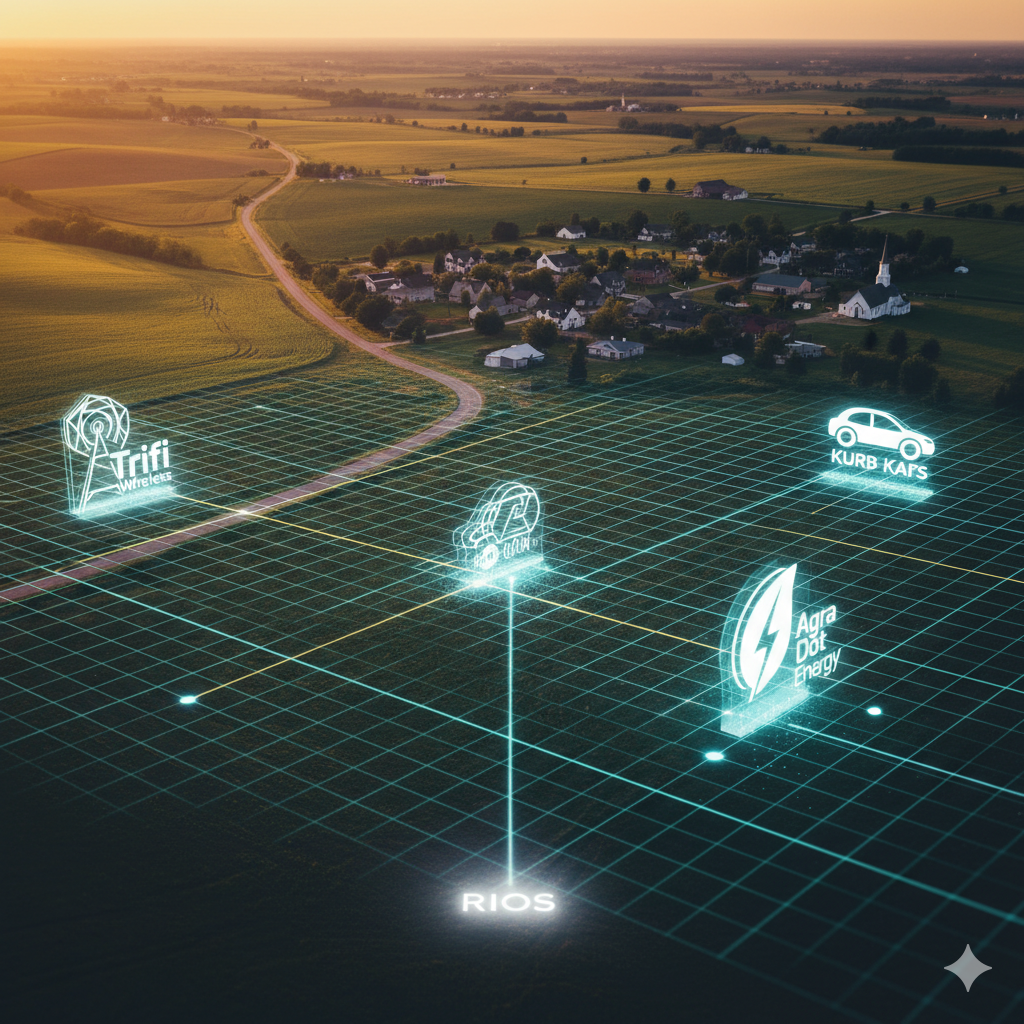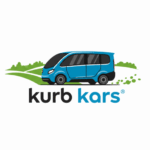
At Kurb Kars, our mission is to build the autonomous, resilient logistics engine for the next economy. Our vehicles, from our logistics platforms to our future autonomous passenger fleets, are not just transporters—they are mobile data centers and critical nodes within DeReticular’s Rural Infrastructure Operating System (RIOS).
While our autonomous operations demand a massive, high-speed connection (like Starlink and Trifi Wireless) for real-time AI and tele-operation, the resilience of our system depends on a parallel, ultra-low-power network that can function anywhere, anytime, for years.
This report dives into a piece of technology that is essential to our operational stability: the Dual-Band LoRa Network Module, and how it integrates into the DeReticular network, with a specific focus on its indispensable role within every Kurb Kars vehicle.
The DeReticular Network: A Layered Approach to Resilience
The RIOS is built on a philosophy of Local-First, Global-Second connectivity. This requires a multi-layered network design to ensure that if the high-speed link goes down, the mission-critical telematics and sensor data continue to flow.
Layer 1: The Global Backhaul (Starlink Priority)
- Role: High-speed gateway to the global internet.
- Function: Handles heavy data traffic, including offloading petabytes of AI-generated data, remote vehicle tele-operation, and large software updates for the Kurb Kars fleet.
Layer 2: The Local High-Bandwidth Mesh (Trifi Wireless)
- Role: Community and high-density operational connectivity.
- Function: Provides high-speed, local Wi-Fi to employees, the processing plant, and the AI Compute Cluster, ensuring real-time data transfer for tasks like credit card processing and high-definition video monitoring.
Layer 3: The Ultra-Resilient Sensor Grid (LoRa/NeoMesh)
- Role: Ubiquitous, low-power telematics and sensor backhaul.
- Function: This is where the NeoCortec and Embit Dual-Band LoRa Wireless Network Module operates. Its purpose is to create an omnipresent network for thousands of low-data-rate sensors and as the final failsafe telematics link for Kurb Kars.
How LoRa/NeoMesh Drives Kurb Kars’ Autonomous Reliability
The NeoMesh module combines LoRa’s exceptional long-range and noise immunity with NeoCortec’s dynamic, self-healing mesh protocol. This fusion is precisely what a company managing autonomous operations over 7,000 remote acres needs.
1. The Autonomous Failsafe Telematics Link
For Kurb Kars, the dual-band LoRa module is the “Canary in the Coal Mine”—the last line of communication when the primary high-bandwidth links fail.
- Emergency Telematics: While a Kurb Kars vehicle uses Starlink for navigation and high-definition sensor data, if the vehicle travels into a deep ravine, a dense stand of trees, or experiences an equipment failure that knocks out the main router, the LoRa module remains active. It automatically switches from 2.4 GHz to the sub-GHz band for maximum penetration and range, sending a low-data-rate packet containing:
- GPS Coordinates: The exact, up-to-the-second location of the vehicle.
- Critical Alerts: Battery charge status, “Stop Order” confirmation, or a “Vehicle Error” code.
- Self-Healing Network: The module uses NeoMesh software, meaning the Kurb Kars vehicle does not need a direct connection to a central tower. Its LoRa radio simply needs to connect to the nearest active node—which could be a stationary sensor 2 miles away, another autonomous vehicle, or a low-power Trifi Node. The signal will automatically hop its way back to the RIOS command center.
2. Field Sensor Ubiquity and Longevity
Autonomous fleets are only as intelligent as the data they receive. LoRa/NeoMesh allows Kurb Kars to deploy an unparalleled density of environmental sensors across the campus to optimize our route planning and material handling.
- Ultra-Low-Power Field Sensors: We can deploy thousands of tiny, battery-powered sensors (e.g., weighing less than one ounce) to monitor soil moisture, wind speed, and the fill level of hemp feedstock bins. The LoRa module’s ultra-low power consumption means these sensors can operate for years on a single coin battery, reducing maintenance costs dramatically.
- Dynamic Load Optimization: A Kurb Kars automated truck approaches a feedstock bin. Instead of waiting for a manual check, the LoRa sensor in the bin instantly transmits a 5-kilobyte data packet to the vehicle’s onboard module, confirming the exact weight of biomass. This data is processed locally by the Kurb Kars computer, allowing the autonomous vehicle to adjust its route, suspension, and material intake in real time, increasing efficiency and reducing wear and tear.
3. Global Compliance for Scalability
The Dual-Band capability of the NeoMesh module is critical for Kurb Kars’ future beyond the Uganda pilot.
- Worldwide Scalability: The module is compliant with both worldwide sub-GHz and 2.4 GHz frequency-band regulations. As Kurb Kars scales its proven autonomous logistics model to 10 new campuses (and eventually global markets), the underlying telematics platform remains the same. This vastly simplifies hardware procurement, inventory management, and technical training.
Kurb Kars: Built for the Unbreakable Edge
For Kurb Kars, the Dual-Band LoRa/NeoMesh module is the final assurance of resilience. It is the key piece of technology that connects the remote, low-data sensor world to the high-speed world of the AI Compute Cluster.
By combining the long-range, self-healing reliability of LoRa with the sheer bandwidth of Starlink, Kurb Kars vehicles achieve an unprecedented level of “always-on” intelligence. We don’t just move materials; we ensure that critical data flows without interruption, making our autonomous fleets the most resilient and predictable logistics platforms operating in the next economy.

